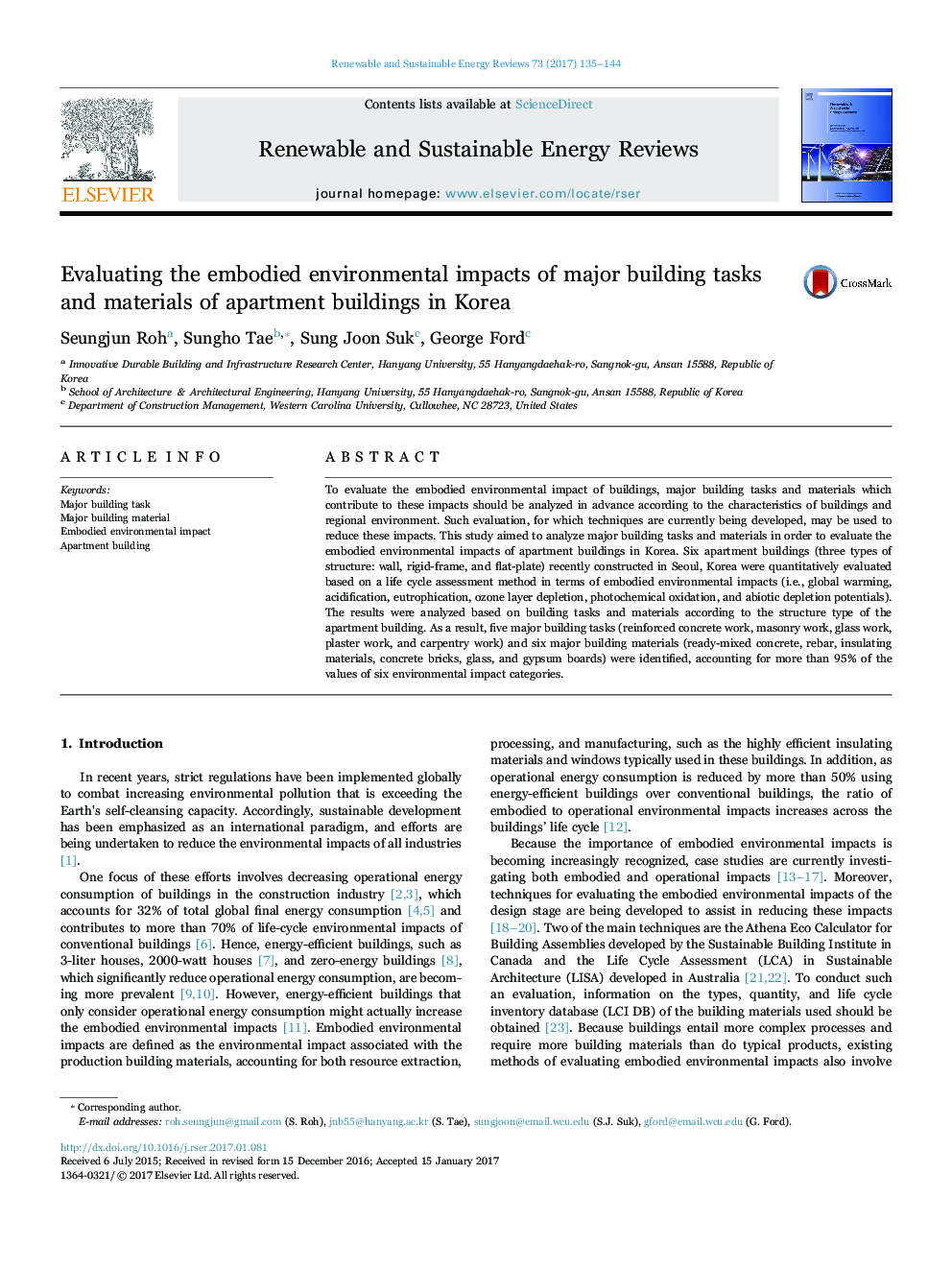| Article ID | Journal | Published Year | Pages | File Type |
|---|---|---|---|---|
| 5482252 | Renewable and Sustainable Energy Reviews | 2017 | 10 Pages |
Abstract
To evaluate the embodied environmental impact of buildings, major building tasks and materials which contribute to these impacts should be analyzed in advance according to the characteristics of buildings and regional environment. Such evaluation, for which techniques are currently being developed, may be used to reduce these impacts. This study aimed to analyze major building tasks and materials in order to evaluate the embodied environmental impacts of apartment buildings in Korea. Six apartment buildings (three types of structure: wall, rigid-frame, and flat-plate) recently constructed in Seoul, Korea were quantitatively evaluated based on a life cycle assessment method in terms of embodied environmental impacts (i.e., global warming, acidification, eutrophication, ozone layer depletion, photochemical oxidation, and abiotic depletion potentials). The results were analyzed based on building tasks and materials according to the structure type of the apartment building. As a result, five major building tasks (reinforced concrete work, masonry work, glass work, plaster work, and carpentry work) and six major building materials (ready-mixed concrete, rebar, insulating materials, concrete bricks, glass, and gypsum boards) were identified, accounting for more than 95% of the values of six environmental impact categories.
Related Topics
Physical Sciences and Engineering
Energy
Renewable Energy, Sustainability and the Environment
Authors
Seungjun Roh, Sungho Tae, Sung Joon Suk, George Ford,
